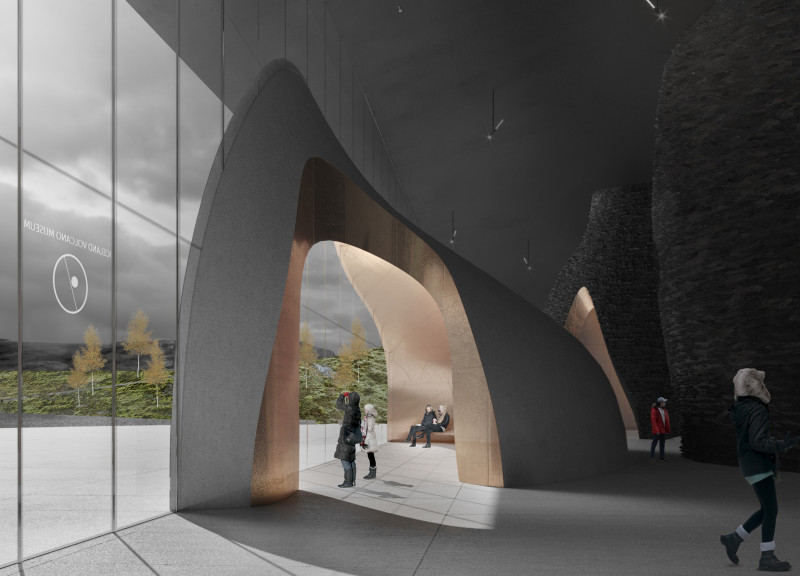5 key facts about this project
The museum in Iceland integrates the island’s rich geological history with cultural narratives, forming a space that reflects the environment. Set against the backdrop of dramatic volcanic landscapes, the design aims to create an experience that resonates with visitors. At its core, the museum features a circular form that represents unity and coexistence, reinforcing the bond between people and nature.
Circular Form
The design revolves around a circular shape that signifies the relationship between natural and human experiences. This circular section is divided into two areas: an open yard that connects visitors to the outside world and an exhibition hall dedicated to displaying artifacts. A thin glass wall separates these spaces, promoting visual transparency and a fluid transition between indoors and outdoors. This approach encourages interaction with the landscape, allowing nature to become part of the visitor's experience.
Organic Morphology
The museum’s form mimics the geological features found in Iceland, such as craters, pseudocraters, and lava formations. The design blends with the landscape, drawing attention to the natural beauty around it. By embodying the characteristics of the topography, the structure becomes part of the environment rather than a standalone building. Visitors engage with the space in a way that reflects Iceland's volcanic landscape, enhancing their understanding of its history.
Park and Ecological Restoration
Adjacent to the museum, a park extends from the semi-circular yard and supports a tree restoration initiative. This element addresses Iceland's environmental history, where extensive deforestation took place following its settlement. The park is designed in a bowl shape that provides protection for young trees, helping them thrive against strong winds. This feature serves as a reminder of the project’s commitment to sustainability, celebrating the ecosystem and promoting ecological responsibility.
Interactive Hearth
Entering the museum, visitors find a hall designed to resemble a hearth, conveying warmth and comfort. This space includes areas for rest, inviting people to pause and reflect. The hearth room uses volcanic geothermal energy for heating, emphasizing the connection to Iceland's natural resources. This design choice reinforces the museum's role in connecting people to the land, creating a space that honors both the culture and ecology of Iceland.






















































